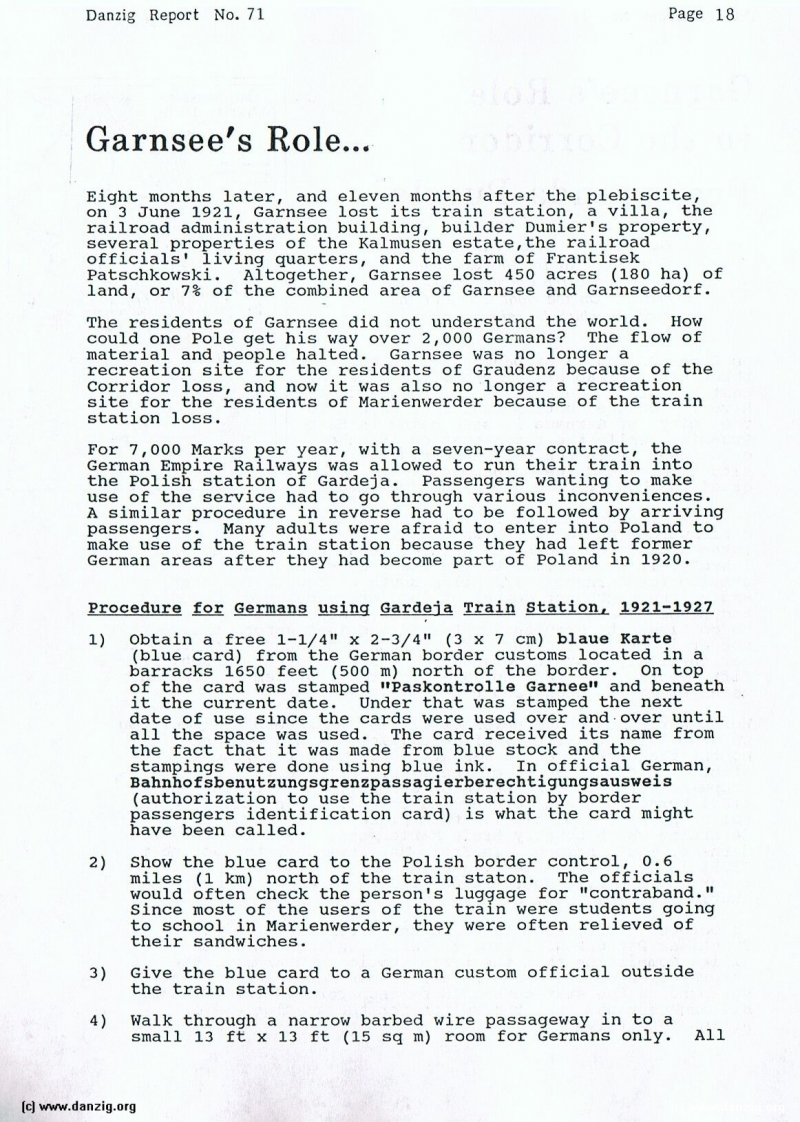
Eight months later, and eleven months after the plebiscite, on 3 June 1921, Garnsee lost its train station, a villa, the railroad administration building, builder Dumier’s property, several properties of the Kalmusen estate,the railroad officials’ living quarters, and the farm of Frantisek Patschkowski. Altogether, Garnsee lost 450 acres (180 ha) of land, or 7% of the combined area of Garnsee and Garnseedorf.
The residents of Garnsee did not understand the world. How could one Pole get his way over 2,000 Germans? The flow of material and people halted. Garnsee was no longer a recreation site for the residents of Graudenz because of the Corridor loss, and now it was also no longer a recreation site for the residents of Marienwerder because of the train station loss.
For 7,000 Marks per year, with a seven-year contract, the German Empire Railways was allowed to run their train into the Polish station of Gardeja. Passengers wanting to make use of the service had to go through various inconveniences. A similar procedure in reverse had to be followed by arriving passengers. Many adults were afraid to enter into Poland to make use of the train station because they had left former German areas after they had become part of Poland in 1920.
Procedure for Germans using Gardeja Train Station, 1921—1927
1) Obtain a free 1—1/4” x 2—3/4” (3 x 7 cm) blaue Karte (blue card) from the German border customs located in a barracks 1650 feet (500 m) north of the border. On top of the card was stamped “Pasicontrolle Garnee” and beneath it the current date. Under that was stamped the next date of use since the cards were used over and over until all the space was used. The card received its name from the fact that it was made from blue stock and the stampings were done using blue ink. In official German, Bahnhofsbenutzungsgrenzpassagi erberechtigungsauswei s (authorization to use the train station by border passengers identification card) is what the card might have been called.
2) Show the blue card to the Polish border control, 0.6 miles (1 3cm) north of the train staton. The officials would often check the person’s 1ugage for “contraband.” Since most of the users of the train were students going to school in Marienwerder, they were often relieved of their sandwiches.
3) Give the blue card to a German custom official outside the train station.
4) Walk through a narrow barbed wire passageway in to a small 13 ft x 13 ft (15 sq m) room for Germans only. All
Danzig Report Vol. 1 - Nr. 71 - April - May - June - 1991, Page 18.
Hits: 1670
Added: 30/06/2015
Copyright: 2024 Danzig.org

